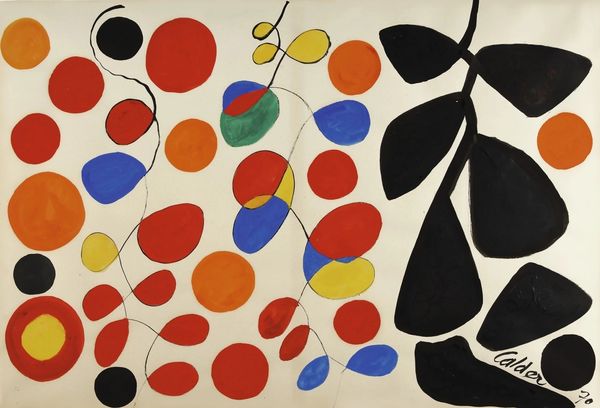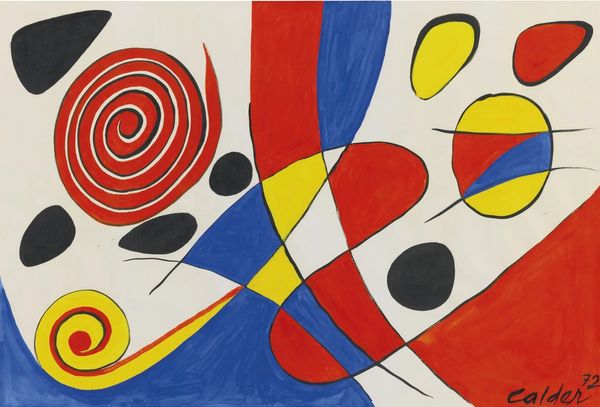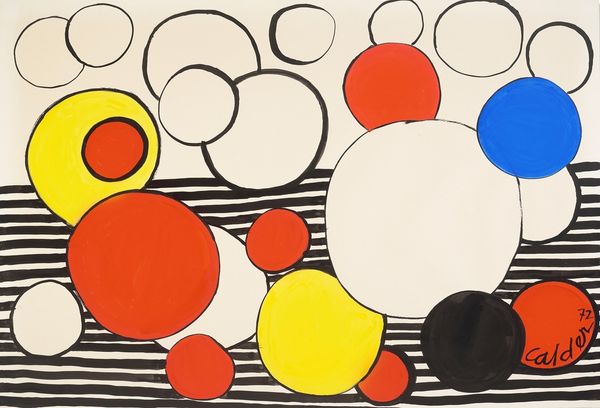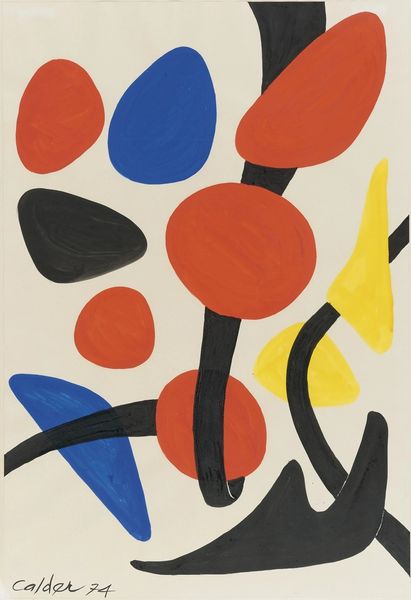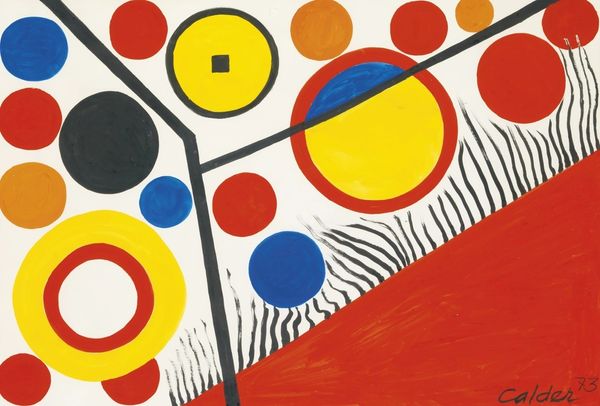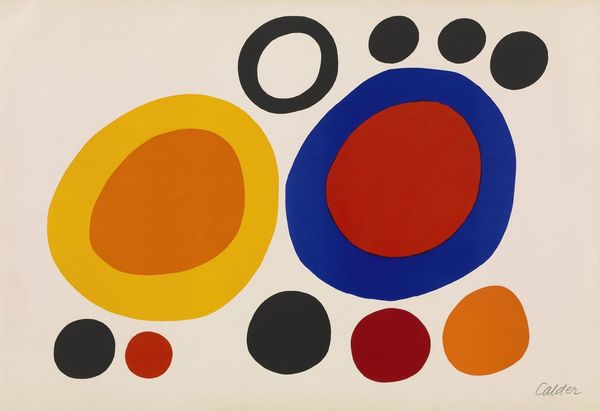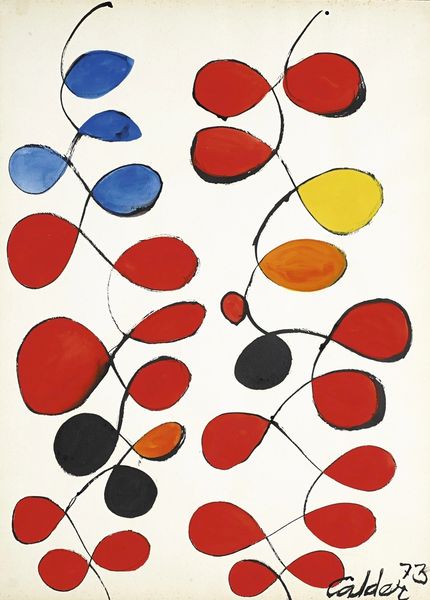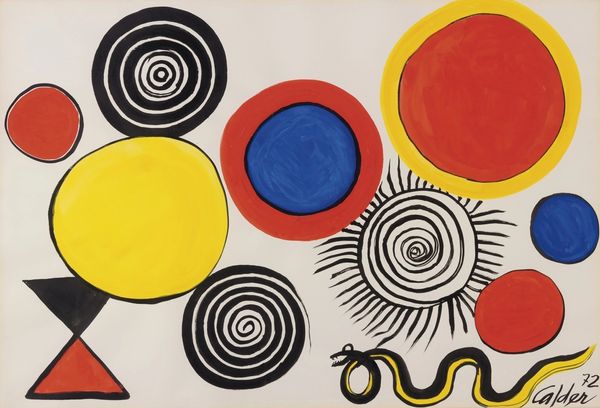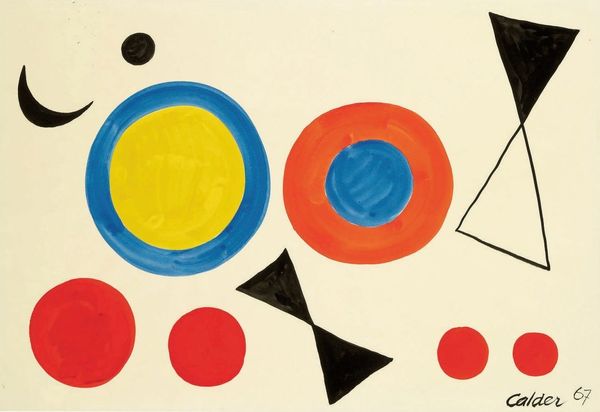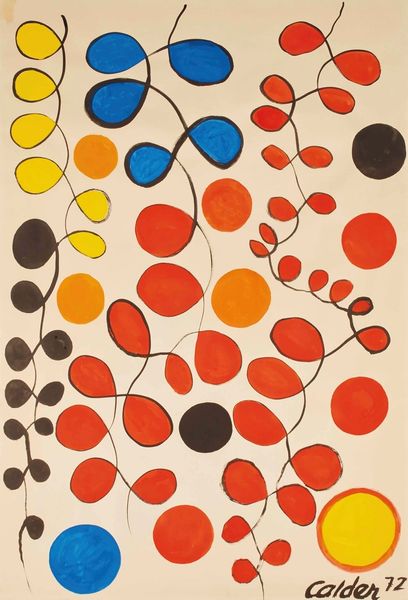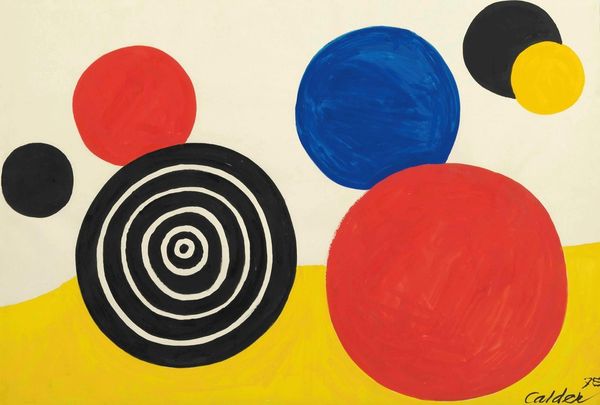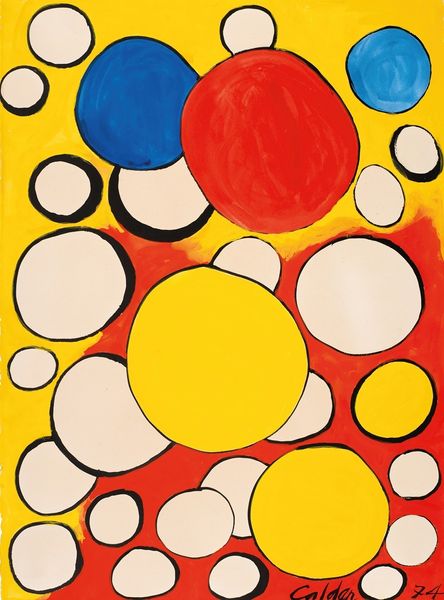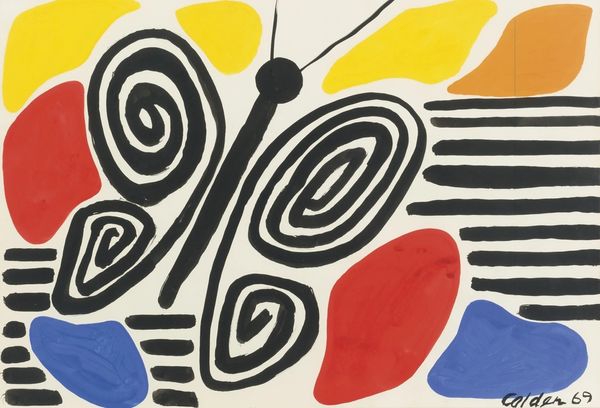
Copyright: Modern Artists: Artvee
Curator: Let’s discuss Alexander Calder’s painting "Sun Shine" from 1976. It is an acrylic work full of shapes and vibrant color. What's your initial take on this? Editor: Energetic. Playful. The juxtaposition of bold primary colours—red, blue, yellow—with those sweeping black lines feels very dynamic. Reminds me of children's toys and mobiles. Curator: Indeed. Calder’s work often embraced a sense of playful dynamism. What makes this visually interesting is understanding that during the mid-1970s, the art world still often categorized painting within high art and these very playful, almost decorative, styles were frequently set in opposition. Editor: Right, the very *materiality* of this piece complicates that distinction. The flatness of the acrylic, the visible brushstrokes – you can practically feel Calder’s hand in its making. No attempt to hide the process here; it's direct and honest. That contrasts beautifully with how a piece of 'high art' may have presented its process. Curator: Calder had a unique position, his success in monumental sculpture definitely provided him space and liberty within the galleries. Pop-Art as a movement played a pivotal role in the wider acceptance of a bolder imagery at the time. It opened up avenues. What appears simple can conceal layered complexity and engagement. Editor: And that simplicity underscores the value of skilled making. Look at those lines, for instance – seemingly carefree, yet so carefully placed. And the unprimed paper and the build-up of the acrylic itself, the almost handmade aspect of that is vital to appreciating how such a simple image came to exist, no? Curator: Agreed. It reminds us that materials carry stories. Beyond its aesthetic charm, "Sun Shine" serves as a visual manifestation of material ingenuity and also the influence of modernism’s evolution within a commercial setting. Editor: Precisely. A work like this invites us to appreciate both the artistry of making and also the broader cultural narratives influencing even seemingly simple works. Curator: Thank you. Editor: Likewise.
Comments
No comments
Be the first to comment and join the conversation on the ultimate creative platform.
